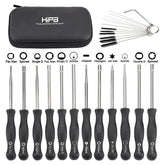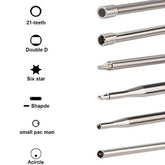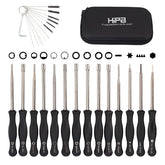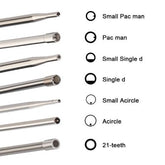Why Your 2-Stroke Engine Muffler Gets Flooded & How to Quickly Unflood It?
Introduction
2-stroke engines are commonly used in many outdoor power tools, from lawnmowers to chainsaws and trimmers. While they're known for their power and simplicity, they can sometimes experience issues, like the muffler flooding, which can prevent proper operation. In this post, we'll explore why this happens, focusing on carburetor issues, spark plugs, and other potential causes, and share steps to quickly fix the problem.

1. What Causes a F![]() looded Muffler in a 2-Stroke Engine?
looded Muffler in a 2-Stroke Engine?
Rich Fuel Mixture: When the carburetor delivers too much fuel to the engine, it can cause the engine to become flooded. This leads to fuel accumulating in the muffler and exhaust system.

Carburetor Problems:
Sticking Needle Valve: If the needle valve in the carburetor doesn't close properly, it can continue to allow fuel into the chamber, flooding the engine.

Dirty Carburetor Jets: Clogged jets can cause improper fuel delivery, potentially overwhelming the engine with fuel.

Bad Spark Plug: A faulty or worn-out spark plug may not ignite the fuel mixture correctly, leaving too much unburned fuel in the combustion chamber, which can flood the muffler.
 Excessive use of the primer bulb can push too much fuel into the system, especially if the engine hasn't been started recently.
Excessive use of the primer bulb can push too much fuel into the system, especially if the engine hasn't been started recently.
Choking the Engine While Pulling the Starter Cord: Keeping the choke on while repeatedly pulling the starter cord can result in too much fuel entering the engine. The engine may not be able to burn it all, leading to flooding and fuel accumulation in the muffler.
Scored Piston and Low Compression: If the piston is scored or damaged, it can reduce the engine's compression. This can cause poor combustion, as there's not enough pressure in the chamber to properly burn the fuel, leading to flooding in the muffler.

2. Signs of a Flooded Muffler
Excessive Smoke: You may notice more smoke than usual, and it could smell strongly of gasoline.
Engine Won't Start or Runs Rough: If your engine cranks but refuses to start, or runs erratically, flooding is often the culprit.
Sputtering or Stalling: The engine may sputter or stall after briefly running, signaling too much fuel in the combustion chamber.
3. How to Quickly Unflood a 2-Stroke Engine and Fix the Muffler Issue
Step 1: Check the Fuel System
Inspect the Fuel Mixture: Ensure you're using the correct fuel-to-oil ratio. A lean or too rich mixture can lead to flooding issues.
Examine the Carburetor: Look for signs of dirt, clogs, or a faulty needle valve. Cleaning or replacing the carburetor may be necessary.
Check the Spark Plug: A bad spark plug can cause misfires and flooding. Inspect the spark plug for wear, corrosion, or carbon buildup. If it looks bad, replace it with a new one.
Step 2: Clear the Flooded Muffler
Remove the Spark Plug: If the muffler is flooded, it's likely the spark plug is soaked with fuel. Remove it and dry it off with a clean rag.
Pull the Starter Cord a Few Times: This will help expel excess fuel from the combustion chamber.
Step 3: Dry Out the Muffler and Engine
Let It Sit: Allow the engine to sit for a while to let any excess fuel evaporate.
Warm Up the Engine: After ensuring the muffler is clear, replace the spark plug, and try starting the engine again. Sometimes a quick rev after starting will help clear out the remaining fuel.
Step 4: Avoid Overpriming
Be Cautious with the Primer Bulb: Only press the primer bulb a few times as needed to get the engine started. Too much priming can cause the flooding.
4. Preventing Muffler Flooding in the Future
Regular Carburetor Maintenance: Clean the carburetor and jets regularly to prevent clogs.
Proper Fuel Mixture: Always use the right fuel-to-oil ratio and avoid using old or improperly mixed fuel.
Don't Overprime: Be mindful of the primer bulb's use to avoid flooding the engine.
Avoid Choking the Engine Too Long: Only use the choke when necessary, and make sure to turn it off after the engine starts.
Regular Spark Plug Checks: Inspect and replace spark plugs regularly to ensure proper ignition.
Conclusion
Flooding in the muffler is a common problem for 2-stroke engines, often caused by carburetor issues, spark plug problems, or overpriming. By following these steps to diagnose and unflood your engine quickly, you can avoid long-term damage and get back to using your equipment in no time. Regular maintenance, especially of the carburetor and fuel system, will help keep your engine running smoothly and prevent future flooding issues.






















